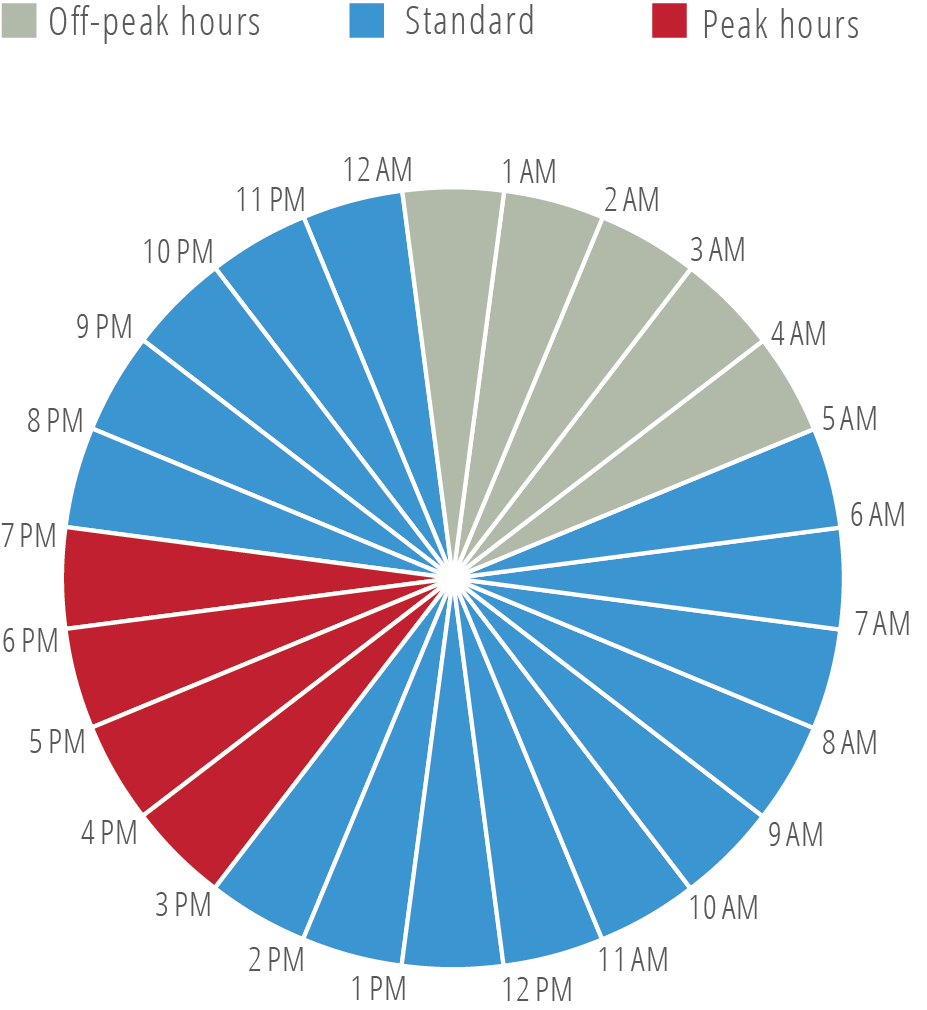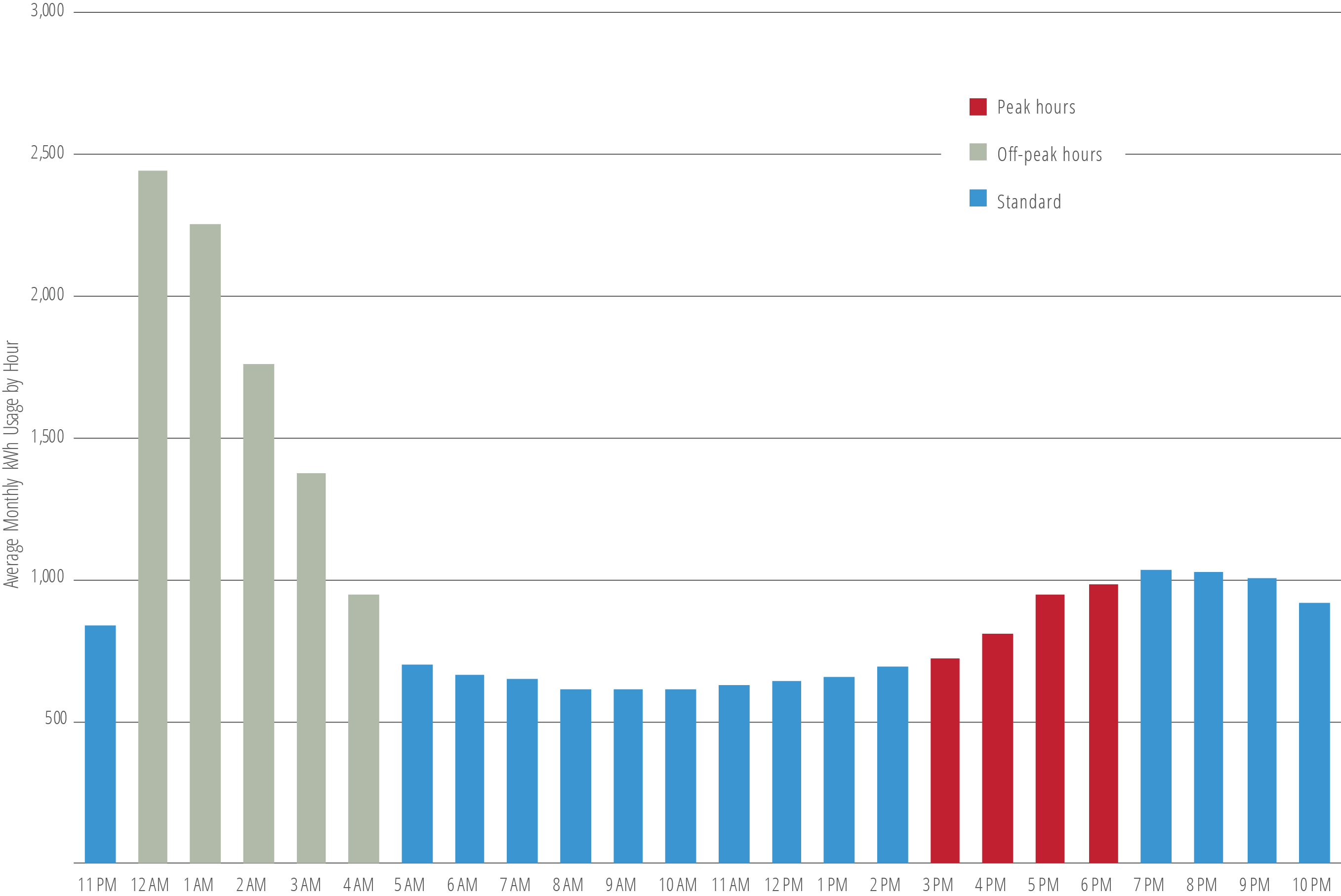Flexible Electric Rates Benefit Customers and Utilities
The number of households adopting electric vehicles is increasing, and when and how customers charge their EVs will dictate a need for distribution system upgrades.
| WPPI Energy | Sun Prairie, WI |
| Membership | 51 public power utilities across Wisconsin, Iowa, and Upper Michigan |
| Employees | 118 |
| Customers | Members serve over 215,000 homes and businesses |
| 2023 Annual Operating Revenue | $478,891,558 |
|
2023 Energy Mix (preliminary) |
33.5% Coal, 22.2% Natural Gas, 20% Nuclear, 10.3% Renewables, 14% Renewables (No RECs) |
As a member-owned and member-governed joint action agency, WPPI Energy’s interests are wholly aligned with those of its members. In 2022-2023, members of WPPI Energy partnered with an outside organization to study the impact of EVs on local distribution systems and found that flexible electric rates benefit customers and utilities.
Members of WPPI Energy believe properly designed rates are essential to a utility’s financial health. As such, one of the services WPPI Energy provides to members is rate design and application. Utilities often find that a review and adjustment of retail rates are necessary, which requires the development of an application to the respective governing body. WPPI Energy Energy staff work closely with members during this process.
Data shows that residential customers are reactive to price signals, such as time-of-use rates. These rates encourage customers to charge off-peak, resulting in lower system costs for all customers.
WPPI Energy’s member utilities expressed an interest in pursuing time-of-use rates for EV drivers and Waunakee Utilities in Wisconsin agreed to be the first member to approach the Public Service Commission for rate approval. Located just north of the capital city of Madison, Waunakee is a fast-growing community with a reputation for having an excellent school system. The community served by Waunakee Utilities, which is a public power utility serving over 7,000 customers, also had relatively high interest in EVs. Waunakee Utilities was an ideal candidate due to already having deployed advanced metering infrastructure and collecting the data that comes along with it.
Implementing an EV-friendly Time-of-Use Rate
| Waunakee Utilities | Waunakee, WI |
| Employees | 17 |
| Customers Served | 7,000+ |
| Annual Sales | 15,093,362 MWh |
| Annual Revenue | $15,136,325 |
| Average Retail Rate | $0.1005 per kWh |
| Generating Mix | Supply purchased through WPPI Energy |
| Governance | A seven-member commission under the jurisdiction of the Public Service Commission of Wisconsin |
| Rate Change | Optional three-tier residential time-of-use rate |
| Goals | Encourage beneficial electrification; save customers and the utility money |
| Key Result | Participating customers saved an average of $9 per month |
“Waunakee has a strong local economy, and we have witnessed an increased interest in EVs,” said Waunakee Utilities General Manager Tim Herlitzka. “As a public power utility, our customers are also our friends and neighbors, so we are always looking for new ways to help them save money.”
Given these interests, Waunakee Utilities worked with WPPI Energy to develop an optional, residential, three-tier time-of-use rate approved. In 2023, the Public Service Commission of Wisconsin unanimously voted to approve the proposed rate.
The rate was designed with an on-peak window of just four hours — much shorter than the 12-hour period typical in two-tier time-of-use rates. In addition, the off-peak period is more deeply discounted. These elements make the rate more friendly for EV drivers who use Level 2 home chargers.
The three-tier rate includes the addition of a new off-peak charge rate from midnight-5:00 am at the lowest cost. The highest rate is from 3:00 pm-7:00 pm and the standard residential charge covers the rest of the time frames. While the new rate is available for all Waunakee residential customers, the offering holds particular appeal for EV drivers. The rate applies to the entire residence, so there is no need for a separate EV charging meter.

“We specifically designed this rate not only to help EV users charge their vehicle at a lower cost at night, but also in a way that doesn’t hurt customers who aren’t participating in the three-tier rate,” continued Herlitzka.
Another perk of the rate is that it will help the utility manage its peak, which normally occurs in the late afternoon or early evening. The new rate encourages EV drivers to charge after midnight. The three-tier time-of-use rate depends on customers having AMI meters, which Waunakee Utilities implemented in 2018. AMI meters are essential to determine how customers are reacting to the price signals and to verify Level 2 charging activity.
The new rate option went into effect April 1, 2023, but it took a while for customers to opt into the new rate. Some customers have now been on the new rate for one year. As of mid-2024, 22 customers have signed on for the new rate. This number is expected to grow as EVs continue to become more popular and customers learn more about the rate option.
Rolled out as the “Nighttime EV Rate,” the utility helped spread the word about the three-tier rate via the utility’s website, a bill insert, and social media. The communications highlighted the rate’s including potential savings and how to sign up. Staff at Waunakee Utilities also let customers know when they think the new rate might work in their favor.
Results So Far
“Waunakee’s Nighttime EV Rate has been in effect for over a year now and the initial results are encouraging,” shared Tim Ament, WPPI Energy’s director of rates. “As a group, the customers taking advantage of the off-peak period are increasing their load nearly 200% between midnight and 1:00 am. This is load that isn’t being added during the late afternoon, which would potentially increase Waunakee Utility’s overall system peak demand. As an added benefit, this group of customers are reducing their energy charge by an average of over $9 per month per customer.”

Charging Forward
While Waunakee led the way as the first member of WPPI Energy to offer the three-tier residential time-of-use rate, the approval contributes to the membership’s overall business objective of supporting beneficial transportation electrification for encouraging load growth throughout member communities.
The rate has proven popular with the intended customers in Waunakee, and after Waunakee’s proposal was secured, two additional utility members of WPPI Energy pursued and received approval for the new rate. Kaukauna Utilities and Oconomowoc Utilities now support nighttime EV rates for their customers as well. The WPPI Energy rates team continues to support additional member utilities interested in implementing the EV-friendly offering.
“If I could offer advice to other public power utilities, it would be to get rates designed for EV drivers in place before the EV presence in your community grows larger,” said Ament. “In Wisconsin, it can be a lengthy process for approval. By having rates in place when customers purchase an EV, customers can develop their charging habits to coincide with the preferred window right away.”
